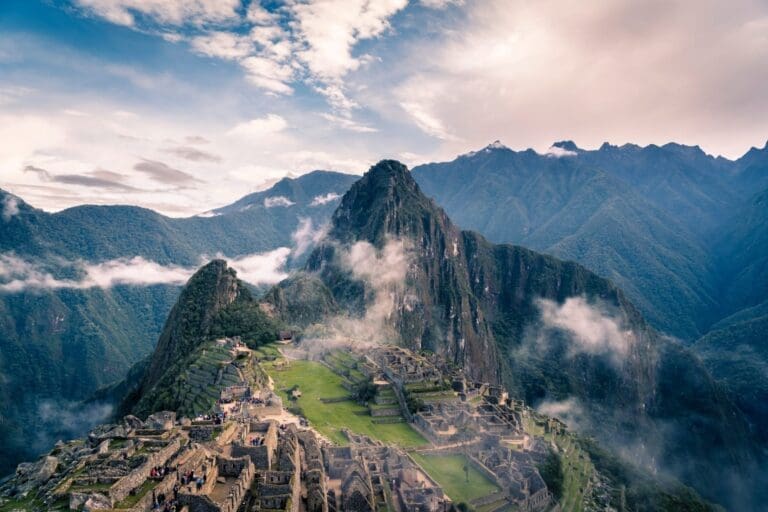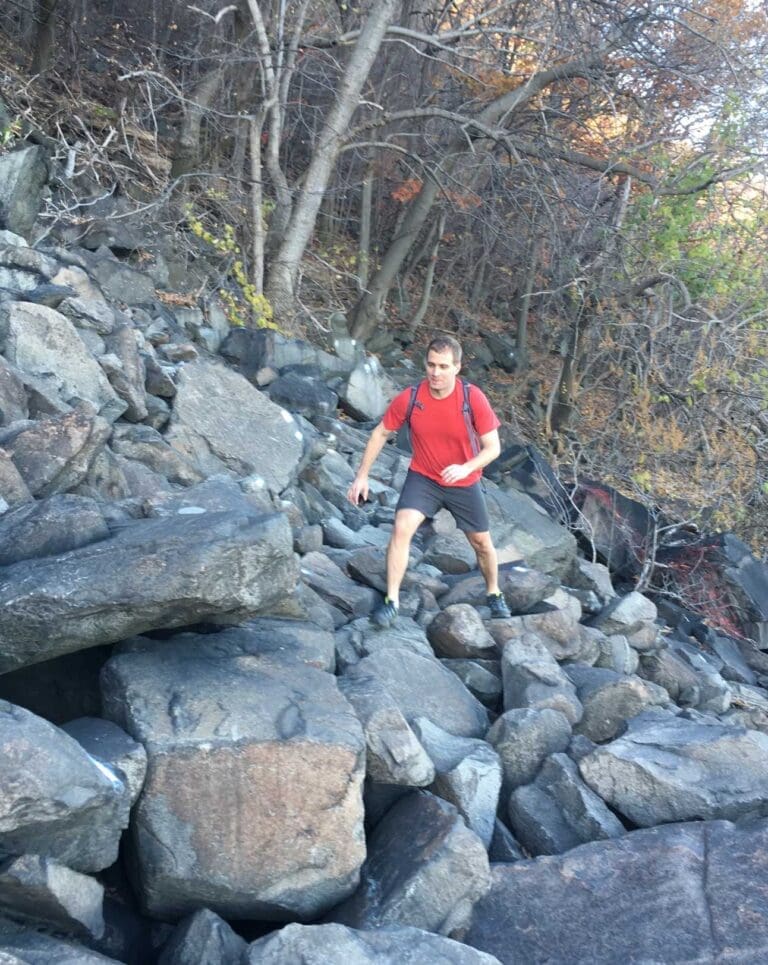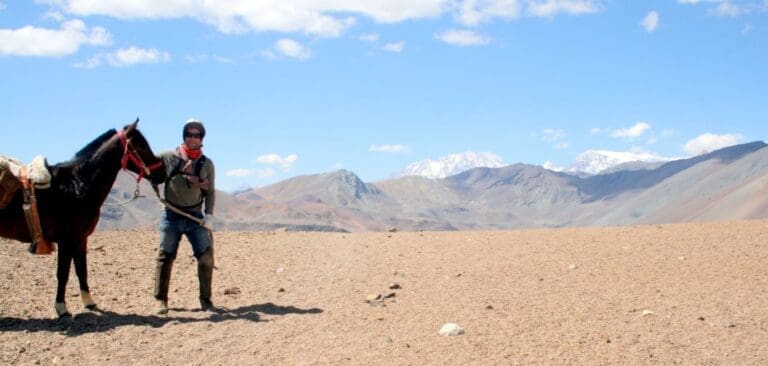The Antarctica Cruise Guide
This Antarctica Cruise Guide contains everything you need to know if you are looking to travel to Antarctica. From crossing the mighty Drake Passage to learning about what to expect when you finally set foot on this icy continent, this guide is full of information to help you plan your trip.
Our Experience on an Antarctica Cruise
I LOVE adventure and have been very lucky to have traveled to over 50 countries across this amazing planet. One of my favorite places to visit is Antarctica. I have explored this amazing continent extensively and it is truly one of the most awe-inspiring travel destinations on the planet.
About Antarctica
Antarctica is a place that many travelers dream of going, but many people do not know much about it. We have read the stories about great explorers like Scott, Amundsen, and Shackleton, who all made epic journeys across this frozen continent. It is the ultimate travel destination and one that belongs on everyone’s bucket list. You may think that only the lucky few go to Antarctica, but you might be surprised to learn that over 70,000 people make the journey via Antarctica cruise ships each year.
History of Antarctica
In 1773, Captain James Cook crossed the Antarctic circle and circumnavigated Antarctica. Even though he didn’t see the landmass itself, there were plenty of rock deposits in icebergs showing that a southern continent did exist. Declaring it of “no benefit” to the world, he didn’t investigate further.
The next visit came from Captain Bellingshausen, a Russian naval officer in 1819-1821. He first saw the actual continent in January 1820, describing it as an “icefield covered with small hillocks.”
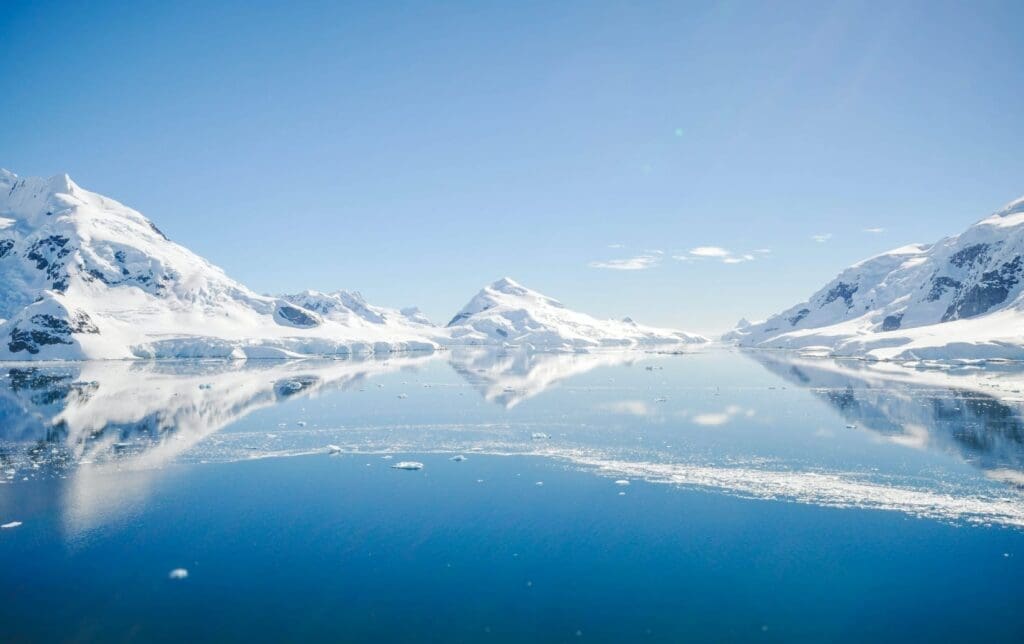
In 1821, the first group of people in history spent a winter within the Antarctic circle. The group consisted of eleven men from the British sailing ship, the Lord Melville. Their ship was driven offshore and did not subsequently return to pick them up. They were involuntarily stranded on King George Island, which is not part of the mainland but lies north of the Antarctic Peninsula. They were rescued the following summer.
In the 1840s, separate British, French, and American expeditions established Antarctica as a continent. British naval officer James Clark Ross took two ships within 80 miles of the coast until being stopped by the vast ice barrier now known as the Ross Ice Shelf.
Some historians believe Carsten Borchgrevink led the first confirmed landing on continental Antarctica in 1899. His team landed at Cape Adare and built huts to survive the winter on the Antarctic landmass. In 1901, Captain Robert Falcon Scott led the first expedition to try and reach the South Pole with Ernest Shackleton and Edward Wilson. They were forced to turn back at 82 degrees south, yet Ernest tried again between 1907 and 1909. In 1907 he reached within 156 km of the South Pole but had to turn back once again. In 1909, Australian Douglas Mawson was the first man to reach the South Magnetic Pole. The south magnetic pole was located on land outside the Antarctic Circle and is about 2,860 km away from the South Geographic Pole.
The first man to reach the South Geographic Pole was Roald Amundsen in December 1911. His Antarctic expedition relied on sled dogs, and along with four fellow Norwegian explorers, they beat the British team lead by Scott by over 30 days.
From here on, radio is introduced, whaling begins in the oceans around Antarctica, map making begins, and more, as the continent is increasingly explored by humankind. This culminated in the International Geophysical Year, where 12 nations established over 60 stations in Antarctica and began international cooperation in Antarctica, cementing it as “non-national.”
Famous Antarctic Explorers
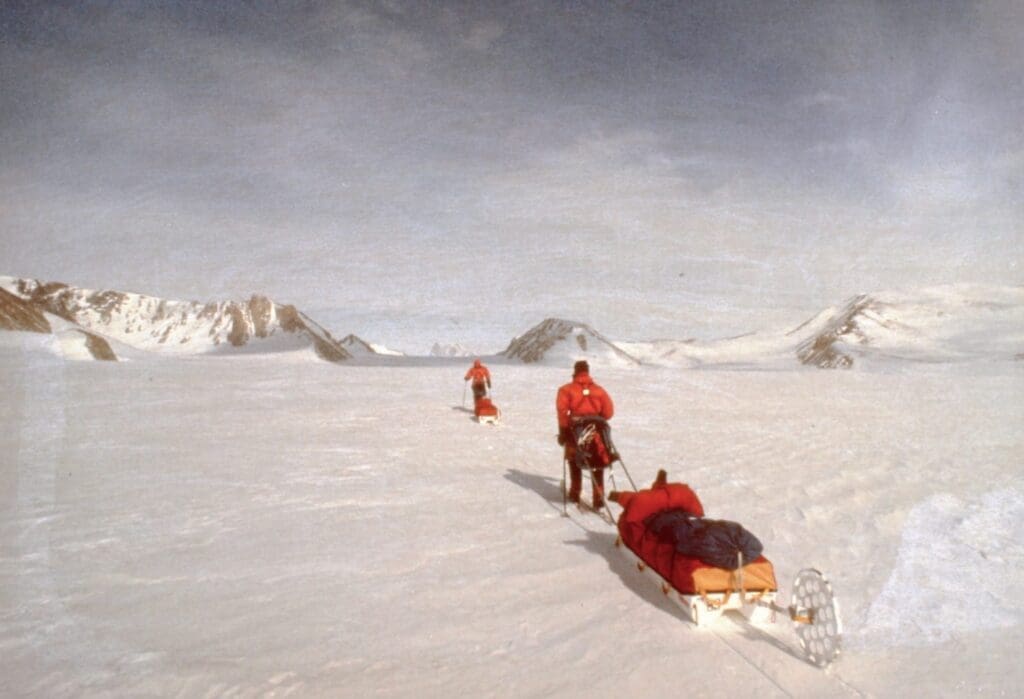
For anyone curious about Antarctica’s pristine landscapes, the explorers who discovered this marvel on our planet hold special significance. These explorers are known throughout the world. What they achieved was considered immense in terms of the feats of human ingenuity and sense of adventure – traveling to Antarctica was once as mythical as travel to space! Here are some of the explorers whose feats of bravery and endurance are worth remembering.
Sir James Clark Ross, Great Britain
James Ross led expeditions on the HMS Erebus in 1839 and the HMS Terror in 1843. He was the first man to formally recognize Antarctica as a continent, rather than just a collection of islands. He discovered Mt Erebus, Mt Terror, the Ross Ice Shelf, the Ross Sea, Victoria Land, Seymour Island, Snow Hill Island, and James Ross Island.
Roald Amundsen, Norway
Amundsen explored the Antarctic region between 1909 and 1911. He and the British Naval Officer Robert Falcon Scott engaged in the Race to the South Pole of 1911, with Amundsen winning out by roughly a month. Being highly competitive, Amundsen originally wanted to be the first person to reach the North Pole, but the Americans got there first – he promptly set his sights on the South Pole instead!
Sir Ernest Shackleton, Great Britain
Shackleton made several voyages to the Antarctic region, with an Australian member of his team, Edgeworth David, leading the first ascent of Mt Erebus in 1908. In his second mission, his ship was sunk by an iceberg, but Shackleton managed to keep himself and his crew alive against all the odds.
Robert Falcon Scott, Great Britain
Scott tried twice to reach the South Pole, the first time with Sir Ernest Shackleton in 1901 when they made it further than any men previously. Known primarily for the disastrous second attempt, Scott encountered several unfortunate problems with his team, though he and his team did reach the Pole in January 1912. Unfortunately, Amundsen beat them to it, and Scott passed away at Camp Evans before making it home.
People Living in Antarctica
Many often ask, “do people live in Antarctica?” With no land bridging between Antarctica and other continents for over 35 million years, there were never any settlers who inhabited the icy continent. The extreme weather in the continent’s interior and the remoteness and lack of resources make it a very inhospitable place to live. Today, Antarctica is still virtually uninhabited. It is estimated that only 1,000 people live on Antarctica year-round on a total of 66 scientific bases. Though there are no cities in Antarctica, population numbers can temporarily be as high as 4,200 people at peak times.
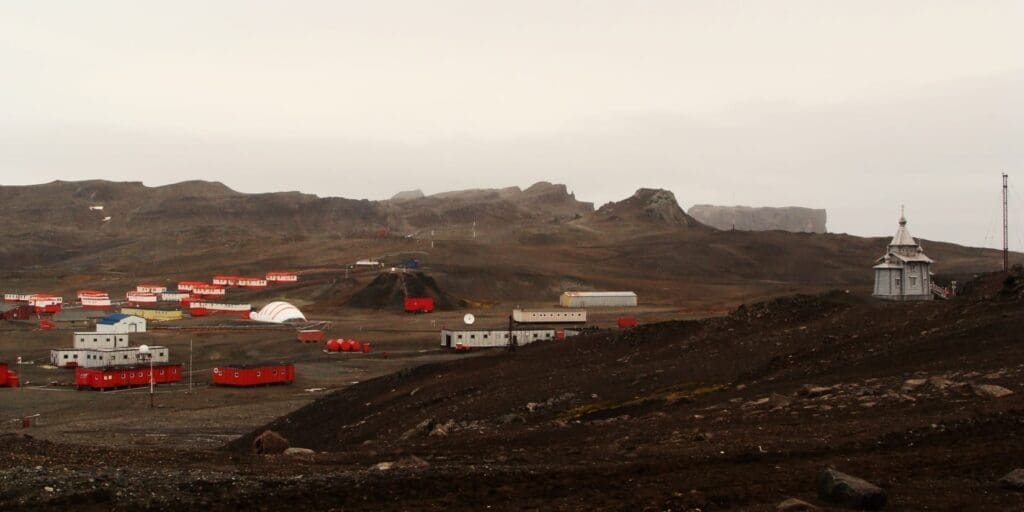
For scientific bases in Antarctica, population tends to hover around 50 people on average, though the US base McMurdo has had up to 1,000 people living there at certain times. It is by far the most extensive base in Antarctica, founded by the US in 1955. The scientific community here works on experiments and research into many different fields – from geophysics, to marine biology and upper atmosphere physics and sea-ice studies, amongst many other areas of inquiry. Many countries have their own bases, including the Scott base, which is only 2 miles from McMurdo, run by New Zealand, and China’s Great Wall base.
Many nations have built their own Antarctica research station to demonstrate some sovereignty over a little slice of Antarctica, though no nation actually owns the continent. Major countries around the world came together to agree to the Antarctic Treaty in 1959, which stated that it is “in the interests of all mankind that Antarctica shall continue forever to be used exclusively for peaceful purposes and shall not become the scene or object of international discord.”
The treaty entered into force from 1961 and currently has 54 countries as signatories. While the treaty allows for freedom of scientific research and observation and exchange of information across nations, it significantly restricts Antarctica from mining or using its natural resources. Under the treaty, the continent must only be used for peaceful purposes.
Antarctic Landscape
The vast majority of Antarctica’s serene landscape is covered by glacier ice. It is divided into giant ice sheets, the East and West Antarctic Ice Sheets. The East Antarctic Sheet is more extensive, thicker, and older. The West Antarctic Sheet is smaller and lies between the Weddell Sea and the Ross Sea. The ice thickness in Antarctica varies depending on the type of ice-sheet. It’s thickest point is nearly 5,000 meters.
Antarctica also contains many islands alongside the large landmass. Some are permanently linked to the mainland by ice. However, others are connected only by seasonal Antarctic sea ice. The coastline is mostly fringed with ice shelves, the biggest being the Ross Ice Shelf in the Ross Sea, and the Filchner-Ronne Ice Shelf in the Weddell Sea. To put this into perspective, the Ross Ice Shelf is almost twice the size of the United Kingdom.

Icebergs are scattered off the coastline, making the terrain challenging to access and navigate for an Antarctica cruise. Antarctica’s climate is intensely cold and harsh, which leads to the formation of glaciers when repeated snowfall is compacted over time. This process leads to an increase in the ice thickness in Antarctica. However, Antarctica’s ice is melting faster than it is being formed due to increasing temperatures and global warming. Antarctic ice levels in the Southern Ocean are currently declining at record levels.
The Antarctic landscape features are vast and varied. Mountains are dotted across the landscape, and there are occasional dry valleys as well. These are extremely low humidity areas, surrounded by mountains that prevent the flow of ice from nearby glaciers. The Antarctica continent is a desert with the inner regions receiving less than two inches of precipitation a year of snow. That is less precipitation than the Sahara desert, and no living organisms have ever been found in the permafrost in these areas.
Antarctic Geography
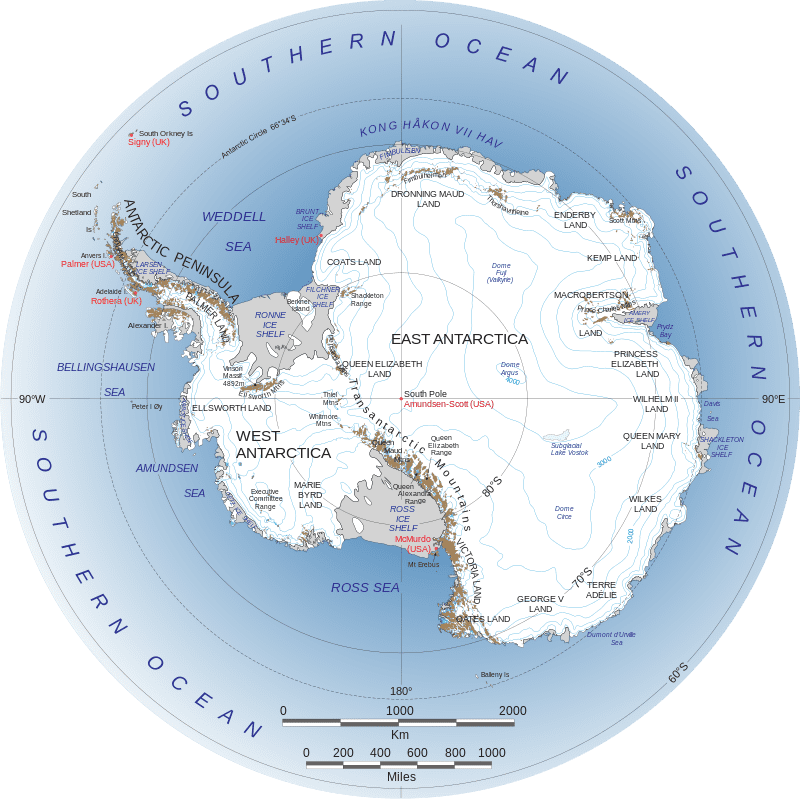
Antarctica is the southernmost continent and is the 5th largest continent in the world. South America is the nearest continent, and its southern tip is located approximately 1,000 kilometers away. Antarctica’s center is the Geographic South Pole, a significant landmark for intrepid explorers across generations who have attempted to cross this extraordinary continent. Antarctica covers a surface area almost twice the size of Australia. Each year, it doubles in size as winter approaches, with the continent’s edges growing due to expanding sea ice in the Southern Ocean.
Antarctica is made up of two distinct parts connected by an ice sheet. The East part of the continent averages 1.6 miles in thickness, whereas the West side is made up of many small blocks covered by the West Antarctic ice sheet and a mountain range, which helps to form the Antarctic Peninsula. The ice sheet is 4,776 meters deep at its thickest, but it averages 2,160 meters thick in much of the continent.
Despite being covered in ice, Antarctica is technically a desert due to its extremely low annual precipitation—less than 2 inches (50 mm) along the interior. Most snowfall occurs along the coastal regions. Beneath its vast ice sheets lie hidden mountain ranges, valleys, and subglacial lakes, including Lake Vostok, one of the world’s largest known subglacial lakes. These features reveal that Antarctica’s terrain is more complex than a frozen wasteland, sparking interest from scientists studying ancient climate records and potential life forms in extreme conditions.
Antarctica is a landmass unlike any other, covered in snow and ice; it contains 90% of the world’s ice and 70% of the world’s freshwater. It is for these reasons that Antarctica gets so much attention from climate change scientists. Experts stress the importance of keeping global temperatures from going up to prevent rising sea levels from melting Antarctic ice.
The Weather
People get chills by just thinking about the Antarctic! For many people who are interested in traveling to Antarctica, weather is a main concern. However, there is a strong distinction between the weather where you would go on an Antarctica cruise versus if you were at the South Pole. It is essential to understand the difference.
The general climate of Antarctica is the coldest on Earth. The lowest air temperature recorded was -128.6 degrees Fahrenheit (-89.2 degrees Celsius) at Russia’s Vostok Station. Even lower ground temperatures have been gathered, and the landscape is also arid. There is an average of only 166mm of precipitation each year, meaning Antarctica is a desert. However, unless you are walking to the South Pole, the temperatures in many of the areas you may visit on an Antarctica sea cruise will average 24 degrees Fahrenheit during the austral summer.
Because the snow rarely melts in many parts of the continent, the snow becomes compressed to form the ice sheet’s glacier ice. Traveling weather fronts rarely make it very far into the continent because of strong cold winds originating from Antarctica’s surface peaks.
Antarctic Wildlife
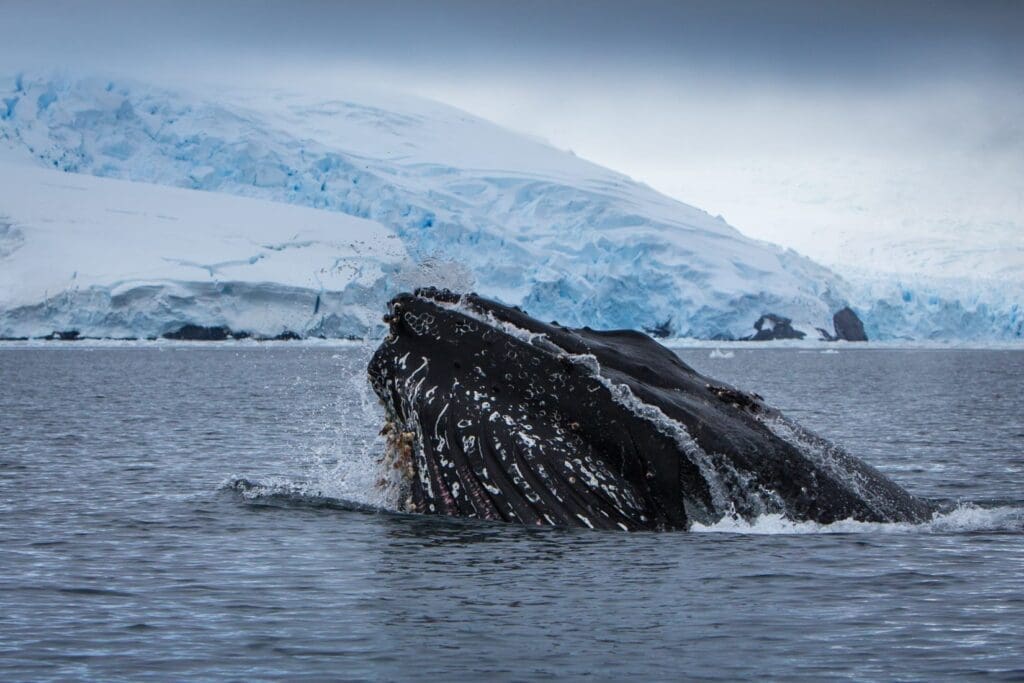
Despite the harsh climatic conditions, there is a variety of wildlife in Antarctica. This includes many kinds of whales, seals, and birdlife. It’s important to remember that nature in this region is sensitive and largely unused to humans. When you travel from an Antarctica cruise ship to land, you do so via Zodiac boats – it’s important to remember that in these boats, you might come within just a few meters of Antarctica animals like seals or whales, who might swim right by you! While this is so incredible to see and can make for a moving and unforgettable experience, there is still etiquette to follow. You can always take pictures, but do not put your hand in the water! Remember not to approach wildlife when on land, as some species are unpredictable or dangerous. We explain more about this below.
Whales
There’s a good chance you’ll encounter some killer whales, humpback, or minke whales when you go on an Antarctica cruise, especially during the warmer months from November to March. Watch them feed on fish, squid, and plankton. Killer whales are likely to go after seals or birds and can be visible to tourists during a hunt!
Seals
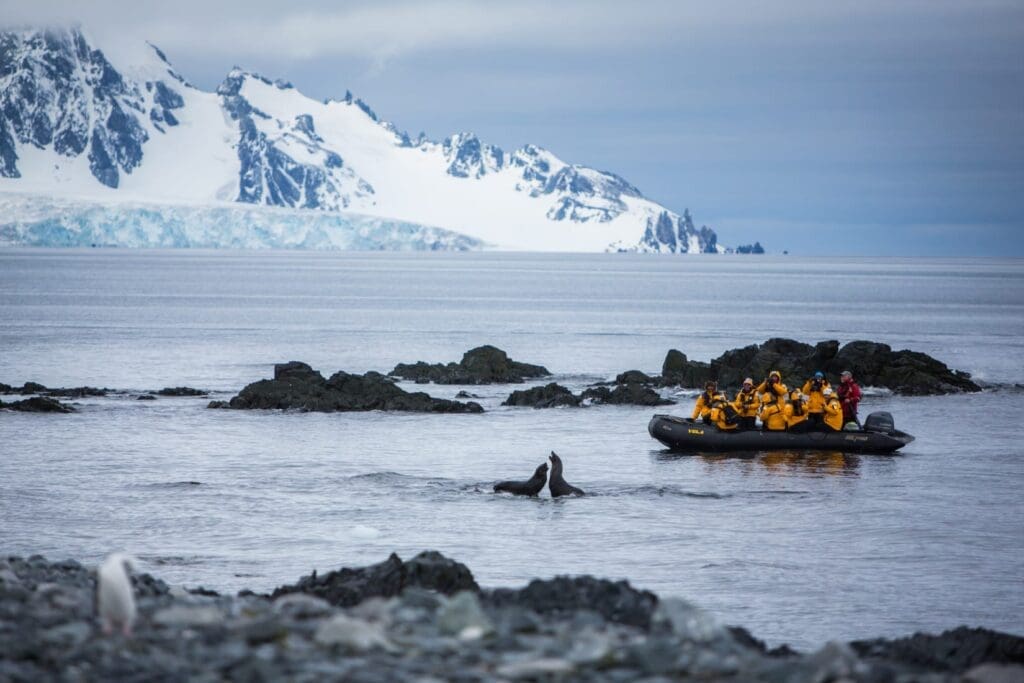
You’ll have a chance to see many kinds of seals in Antarctica, such as elephant seals, crabeater seals, and leopard seals. They are very graceful in the water, and their cubs are adorable to look at!
However, seals can be dangerous, so it’s essential to know where you are walking in Antarctica. Do not stray from designated areas, and be aware not to get too close as this can make territorial seals uncomfortable. The leopard seal is particularly territorial and can attack. Keep your distance and admire it from afar!
Birds
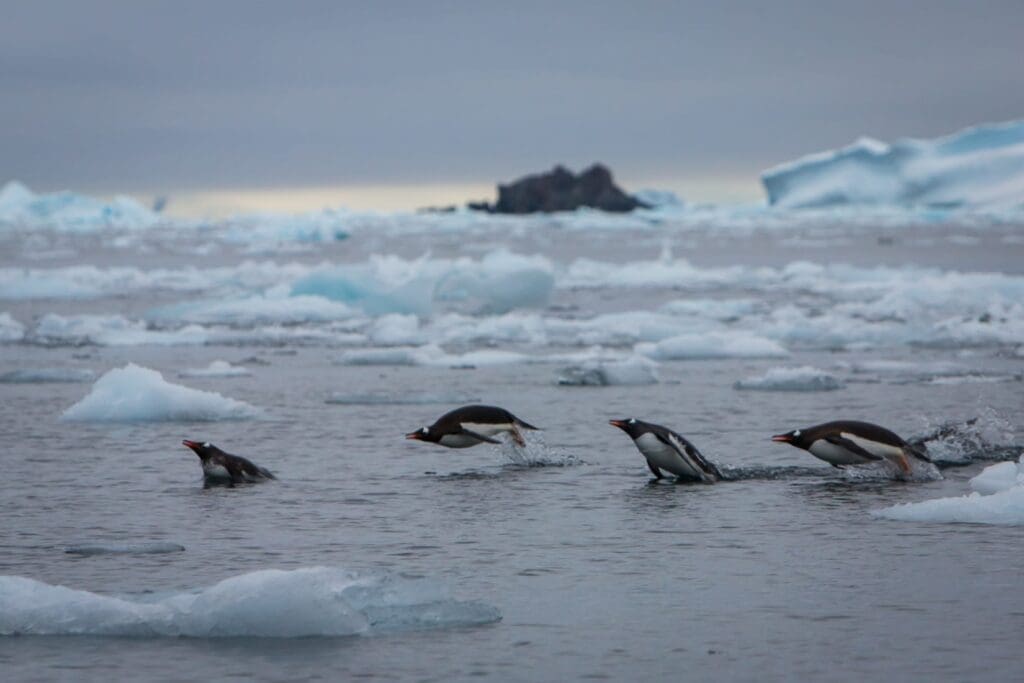
Penguins are the most common bird, and able to survive the harshest conditions on Antarctica. There are 17 different species, though only two (the Emperor and Adelie) call Antarctica home. Other species of Antarctica penguins you might see include chinstrap penguins and gentoo penguins.
Penguins may come up and walk next to you when you land on Antarctica; however, it is important not to touch them. They won’t hurt you! But don’t walk too close or make them feel threatened.
You might also spot albatrosses, petrels, and other kinds of seabirds on your visit. Most bird species found on Antarctica are just visitors – the conditions are very harsh for more creatures to survive!
About Sea Cruising to Antarctica
Visiting Antarctica is a dream for many travelers. This vast, magnificent land is unlike any other on earth. There are several ways to explore this beautiful continent, but an Antarctica cruise is by far the most popular option.
A majority of Antarctica cruise ships begin their journey in Ushuaia, the southernmost city in the world. Ushuaia is at the bottom tip of Argentina, and it typically takes 36 hours of sailing through the infamous Drake Passage to reach Antarctica from this small port city.
When going on an Antarctica cruise, travelers often visit the South Shetland Islands and the Antarctic Peninsula, located approximately 600 miles south of Ushuaia. Some popular sites which we will explore more in this article are the Lemaire Channel and Paradise Harbour. With striking, iceberg-filled passageways, the majesty of the landscape is undeniable. There is also Port Lockroy, a former British research station which is now a museum. On an Antarctica cruise, you can see a variety of local wildlife, including penguins, whales, and seals. This isolated terrain shelters the rich diversity of fauna, providing a charming encounter with the Antarctica animal kingdom.
Getting to Antarctica
About Buenos Aires
For those wanting to reach Antarctica, flights via Buenos Aires is the most common, as it is the international hub for explorers heading south! Your next step is to take a flight to Ushuaia, which can either be a direct flight or contain a layover. The average direct flight to Malvinas Argentinas Ushuaia International Airport takes 3h 35m, covers a distance of 1477 miles, and costs an average of US$250 for the trip.
About Ushuaia
Ushuaia is the southernmost city in the world and has a population of roughly 75,000 people. The city of Ushuaia was formally founded on October 12th, 1884, by Augusto Lasserre, an Argentine naval officer, with missionaries and naval officers signing an act naming Ushuaia as the capital of Tierra del Fuego. Tierra del Fuego is an archipelago jointly controlled by Argentina and Chile. The former controls the eastern half of the main island, and the latter controls the western part, including the islands south of the Beagle Channel. It is a very isolated city and can only be reached by a ferry from the mainland, thus earning the nickname “The End of the World.”
It’s a good idea to arrive in Ushuaia two days before your Antarctica cruise. Use this opportunity to visit the sites, get all your gear in order, and get ready for your trip. Also, it’s essential to arrive early to ensure that the ship doesn’t leave without you if there are flight delays for any reason.
Ushuaia Hotels and Accommodation
Below are two popular hotels that our guests have enjoyed in the past:
Dining and Restaurants in Ushuaia
Ushuaia is home to some excellent Fuegan cuisine, which features a lot of local seafood (including sea bass, octopus, mussels, and king crab) and grilled lamb. Typical Argentine asados can be eaten here, filled with red meat, and accompanied by red wine.
Below are two popular restaurants that our guests have enjoyed in the past:
Sites of Interest in Ushuaia
Ushuaia is a unique city, which features many natural wonders as well as historical treasures. This city is a great place to experience a blend of historical sights particular to its history as a penal colony, with profound and dramatic natural landscapes like glaciers and national parks. Here are just some of the many sites of interest in Ushuaia:
Tierra del Fuego National Park
Here you can experience the dramatic waterfalls, lakes, and snow-capped mountains of Ushuaia’s natural landscape. The southernmost national park on Earth is a place for scenic walks, where you can hike through to the peat bogs, or look over the landscape at the Beagle Channel viewing point or hike Cerro Guanaco. There are lagoons and rugged beach shores that you can access via the Seaside Path. The Hito XXIV trail is also popular and will take you along the coast of Lago Roga. It is possible to camp in the park, and you can also go on tours and learn more about the Yamana people who originally lived here.
Martial Glacier
Ushuaia is home to the Martial Glacier, which is a beautiful place for nature lovers to explore. This peak was named after Luis Fernando Martial, a French scientific expedition leader that arrived in the area in 1883. From a winding street, you can visit the glacier yourself! It’s an excellent area for trekking in the summer, and the street is kept free of snow for safety on the roads in the winter. A ski center is easily accessed by a chair lift and features alpine and off-piste skiing, which is excellent for more experienced skiers.
Ushuaia Prison
Built in 1896, the Ushuaia prison was in operation until 1947 and housed up to 800 convicts at its peak. It had only 380 cells, making it a crowded place. The jail served a series of important functions, with convicts providing labor to build houses and public buildings, as well as services like tailoring, shoemaking, blacksmithing, and more for the local community. You can visit and learn all about the people who were imprisoned here, look at the ship replicas housed here, and learn other information relating to the Tierra del Fuego region’s history.
Laguna Esmerelda
This vivid blue-green glacier is a unique sight to behold, and can be accessed by hiking the dedicated trail. It is a muddy route through bogs, streams, and some ancient forest, but is an otherwise easy hike.
The Port
The Ushuaia port area is filled with shops and places to stop and enjoy a local craft beer. You can get your passport stamped at the End of the World Museum nearby, and learn about the great explorers as well as the history of the penal colony here and the maritime history of the port.

Getting Ready to Travel from Ushuaia to Antarctica
Your day has finally come! You’re ready to pack up your belongings, leave your hotel, and board your ship southbound to Antarctica. This is the exciting day you’ve been waiting for!
Ships tend to leave the port of Ushuaia to Antarctica between 3 PM and 5 PM local time. Ensure you arrive approximately 3 hours before your departure time to clear the port security.
To enter the port and board your ship, you need to go through customs. Have your passport and Antarctica cruise ship ticket ready. The customs office will cross-check your paperwork with their cruise manifest – your details must match to board the Antarctica cruise ship.
Once through customs and on the dock, there is a 100-meter walk to the Antarctica cruise ships. You’ll see ships docked on your left and right! Your ship will let you board a few hours before the departure, so you can get settled into your room and become familiar with the ship itself.
Once everyone has boarded the vessel, your ship captain or expedition leader will offer a series of briefings. They will give you an overview of the expedition, introduce key areas where you can and cannot go on the ship, and introduce the staff. The expedition team will also give you a lifeboat drill, other safety instructions, and an overview of preparing for the Drake Passage. Your safety drill will include your designated area in the case of an emergency, so pay close attention!
The ship’s staff will ask you to “Drake-Proof” your cabin aboard your Antarctica cruise ship. This means learning to pack your personal items and cabin fixtures in the cabin safely to prepare for the rough seas. Also, the staff will instruct you on how to walk on the ship safely. This means maintaining two points of contact at all times (e.g., one hand, one leg) with a secure structure (e.g., a railing or floor). Restrictions to use of the decks and other ship areas will apply during rough seas on the Drake Passage. Your staff will offer guidance for dealing with seasickness and will introduce or point out the doctor on staff who is there to help out.
About the Beagle Channel
As you leave Ushuaia, you enter into the Beagle Channel. The Beagle Channel sits within the Tierra del Fuego archipelago, near the southernmost tip of South America. It is named after the British ship, The Beagle, in which Charles Darwin famously explored the area. It separates the main archipelago island to the north from many smaller islands to the south. The eastern portion of the channel is a part of the Chile-Argentina border. The three islands at the end of the channel were disputed for some time before an agreement in 1985 meant they became part of modern-day Chile. Once passing through the Beagle Channel, you will reach Cape Horn.
About Cape Horn
Cape Horn is named after the Dutch city of Hoorn in the Netherlands. It is the southernmost headland of the Tierra del Fuego archipelago, located on the small Hornos Island. Technically, it isn’t the most southern point of South America, but it marks out the Drake Passage’s northern boundary, which is where the Atlantic and Pacific Oceans intersect! This makes the waters around Cape Horn quite hazardous, with strong winds and waves, currents, and icebergs. It’s well known as a sailor’s graveyard with the turbulent seas and strong winds, causing many problems for the early ships going on expeditions to Antarctica.
About the Drake Passage

This deep waterway is named for the English seaman and explorer Sir Francis Drake and is the collision point between the Atlantic and Pacific oceans. The Drake Passage is the stretch of ocean situated between Cape Horn and the South Shetland Islands. It is a zone of transition between the cooler, more humid, sub-polar conditions of Tierra del Fuego and the more frigid polar regions in the Antarctic, thus making it a unique climatic area. If you are taking an Antarctica cruise for your journey, traveling through the Drake Passage can be a real highlight of your adventure as the seas can be rocky and turbulent.
In the Ushuaia section above, we talked through preparations for the Drake Passage, but many people wonder what the experience is like. The passage is notorious for rough seas, but the truth is that it can also be extremely calm, like a flat lake. When the waves do get rougher, they are incredibly tall, reaching 10 to 15 meters in turbulent conditions. On average, you can expect seas to be between 3 to 5 meters. If the situation is rougher, travelers are asked to stay inside the Antarctica cruise ship, away from the outside deck. Ships will limit programming or planned lectures in harsh conditions, as many may not feel well during this period. The ride lasts approximately 36 hours through the passage from Ushuaia to the South Shetland Islands. There is typically not much to worry about regarding the rough seas – modern ships are well made, with good sonar and radar systems, and are built for these conditions.
Landings in the South Shetland Islands and Antarctica
You’ve made it through the Drake Passage! You’re about to make your first landing – a dream for so many people. It’s a very exciting time, but there are some restrictions you should know about ahead of the landing itself.
No more than 100 people are allowed on land at any one time, in either the South Shetland Islands or on the Antarctic shores themselves. This is highly controlled by the ship staff, in coordination with other ships, and is part of the rules established and governed by the International Association of Antarctica Tour Operators (IAATO). Ships also maintain a distance so that they are not within sight of each other.
Due to these restrictions, and considering that Antarctica cruise ships are often very large, guests are transferred to land in small groups. The large vessels can only go so close to land without running aground, and therefore guests must go via a Zodiac boat. This type of boat is used by militaries worldwide, made of reinforced rubber and a rigid hull. It combines the stability and portability of inflatable boats with a rigid-hull boat (namely, comfort, agility, and speed!).

Depending on the group’s size, once a ship has been given clearance at a particular stop, you will be given an approximate time of landing. You’ll be instructed to go to your room to change into your adventure clothes, get your gear together, and then different groups will be called one at a time to go to the mudroom. This is the place where you’ll have your expedition boots ready and have a chance to put on your jacket, gloves, and life vest. There is also an equipment check, including any bags, clothing, etc., that will be worn onshore. This is to prevent contamination and ensure that no dust or insects are accidentally transported to Antarctica’s delicate ecosystem. Attached to the mudroom is an area where the ship is open, with a small dock to board a Zodiac boat, which will carry 6-10 people per boat.
You’ll have an opportunity to go off ship twice a day. This will typically include one landing onshore per day and a Zodiac cruise amongst the incredible icebergs and wildlife. When you go to the land, the staff will guide you and give instructions for where you can walk. For your safety, these areas are marked with flags. This is not only for your protection from local wildlife (especially leopard seals, as previously mentioned) but also to prevent any disturbance to the natural habitat. Generally, the places you can walk are close to the beach. Staff will not want you to stray far away from the permitted areas, as there may be crevices in the land that are hard to spot. You could fall between these gaps in the ice, which can go down 20-30 feet. Staff inspects the area before landing so that you will have up to date information for your safety.
About the South Shetland Islands
As you leave the Drake Passage, you will notice the weather changes – if you’ve been experiencing strong, rough seas on the route to Antarctica, weather will turn and become flat and crystal clear as you emerge from the passage. You will also start to see more wildlife (like birds and whales) as you leave the Drake Passage, and you will now begin to see land, including small mountains, icebergs, and the dynamic landscapes of Antarctica – you’re very close now! The South Shetland Islands will likely be your first sighting of land.
The South Shetland Islands are a series of islands that lie 75 miles north of the Antarctica Peninsula. The Islands are not owned by any country and are free to be used by anyone, though some governments (like the UK and Chile) have tried to claim them in the past. There are several research stations on the islands. It’s highly likely that you will make a landing on one of these islands as part of your Antarctica cruise.
About the Antarctic Peninsula
Once you reach the destination of your Antarctica travel, everything is bigger and more plentiful – the mountains are vast, the wildlife is incredible. It’s a pristine, untouched landscape, and can be a very emotional experience for many who are visiting. The first sighting of Antarctica is often a dream for travelers.
Looking on your Antarctica map, the Antarctic Peninsula is the northernmost part of mainland Antarctica and protrudes 810 miles from between Cape Adams and a point on the mainland, south of Eklund Island. The peninsula consists of a series of bedrock islands beneath the covering of sheet ice and is home to many research stations. Though many nations have attempted to claim sovereignty, none are internationally recognized.
Be aware that your first landing may be at either location, which isn’t known ahead of time, as it depends on many factors. The ship’s schedule may have a plan, but the sea conditions or unpredictable Antarctica weather can cause this to change. Manage your expectations, but be aware that cruises are doing their best.
Best Time of the Year to Visit Antarctica
When people hear about Antarctica, they worry about the extreme cold temperatures they would have to endure to visit this icy continent. While the chilly climate of the southernmost continent may seem daunting, Antarctica weather varies enough during the year to create a good traveling season.
The best time of the year to go on an Antarctica cruise is from November to March. The average temperature in the northern Antarctic Peninsula during this period is approximately 24 degrees Fahrenheit. This is the summer in Antarctica, and as the ice has melted back, there is an abundance of penguins and other wildlife to see. Also, the Antarctic summer is an excellent time for whale spotting, as well!
Gear, Training, and Preparation
You’ve booked your trip, you’re excited for your Antarctica travels, and now you want to be physically prepared and have the right gear with you to help protect you from the elements. There are several things to prepare ahead of your journey, so here’s what you need to know to feel ready.
Gear and Equipment
You will likely have most of what you need for your Antarctica visit if you ski or snowboard or enjoy other winter sports. At a high level, you will need a parka, knee-high waterproof boots, waterproof pants, and plenty of warm upper and lower layers and socks, hat, scarf, and gloves. If you get to Ushuaia and have forgotten to purchase a few items, several shops have plenty of gear and clothing options for your trip. Some Antarctica cruise ships will give you a brightly-colored parka, as they will want to see you easily on land, but not all ships offer this.
Be sure to bring plenty of sunscreen as the sun can be very strong in Antarctica, especially when it reflects off of the ice and snow. When you are on the ship relaxing, you will want to be wearing comfortable clothing so bring everyday clothes as well. Some ships will offer a laundry room; others will ask you to use a bag that you leave to the cabin steward (though this can be an extra expense).
You might also like to bring a good backpack, binoculars, a camera, a sturdy waterproof bag for your camera, sunglasses, and any seasickness medication you may need. Don’t forget some entertainment while on the ship, like a good book, as internet connectivity is limited.
Fitness and Training
Unless you are planning on skiing to the South Geographic Pole when in Antarctica, depending on the activities offered as part of your cruise, you don’t need a lot of physical training ahead of your visit. Altitude is not a factor in the area of Antarctica where you are likely to be visiting, so there typically is no need to train for high altitude hiking.
Logistics for Travel to Antarctica
Passports and Visas to visit Antarctica
You booked your trip, you’ve got your plan in order. But you want to ensure that you have the proper identification and other paperwork to visit South America and make sure you can fully enjoy your adventure. It is highly likely that on your way to Antarctica, travel will take you through Buenos Aires, Argentina, en route to Ushuaia.
Depending on the country you are traveling from, you may need a visa to enter Argentina, which will need to be arranged in advance. If you require a visa, it is advised that you acquire this well in advance of your trip. We have experienced situations where travelers have waited too long to apply for their visas and were unable to participate in the journey.
It is essential to ensure you have an updated passport with an expiration date at least six months after the arrival date in Argentina. You will need to keep your passport with you in Ushuaia as the passport will be required to enter the port and will be collected when you board the cruise ship. The details must match those you have given the operator in advance, and if there are any changes, you must notify the operator as quickly as possible. The passport will be given back to you once you return to Ushuaia on the final day of your Antarctica cruise.
About the Ship
Antarctica cruise ships vary in size and facilities, but they do tend to have all the essentials for comfortable travel. You will have had an overview when boarding, including an introduction to the staff who often come from all over the world. They will be very friendly and knowledgeable and excited to engage with you.
There tends to be a small shop onboard if you need anything, but be sure to bring any specialized medications as they don’t have everything. TVs onboard have limited channels, and phones are costly and are also not guaranteed to connect. Remember that you are in Antarctica – think of it as a chance to disconnect and enjoy the present moment in this idyllic landscape.
Internet and Phone Connectivity
Most ships have Wi-Fi, but this service can be minimal. Not only is it expensive, but you may only get a connection once or twice a day for about 10 mins. It will suffice for email and Whatsapp updates, but you will not be able to stream movies or videos. It’s a time to disconnect from the net and embrace the dynamism of the natural world instead.
Activities during your Antarctica Cruise
Ship Activities
Your Antarctica cruise will offer a variety of activities for your entertainment and education on the way to Antarctica. This is likely to include multiple deck levels and places to go onboard, including bars, a gym, and a screening room for movies and documentaries. The ship will also offer lectures on climate change and other topics pertinent to the care of the great icy continent. At night, many ships offer karaoke or host live music. Meals are served either as a buffet or sit down option, and most ships can cater to vegetarian or vegan diets.
Adventure Activities Off-Ship
Once you arrive in Antarctic waters, depending on the ship you are on; there are a variety of activities you can do. This includes:
Overnight camping is also a popular option for travelers, but it is quite risky. For this reason, it has become far less common in recent years.
Antarctica Day by Day – a 10-Day Sample Itinerary
There are hundreds of different types of cruises and itineraries when traveling to Antarctica. They differ in length, activities, locations covered, where you may visit, and many other details. Here is what you might expect from a typical ten-day visit to the Antarctic Peninsula.
Day 1
You will arrive in Ushuaia at least one day before the Antarctica cruise departs. Check into the hotel. Afterward, take advantage of the free time to explore Argentine cuisine and the vibrant and friendly social scene in Ushuaia. Buy any last-minute gear or items, and prepare for the departure.
Day 2
At approximately 2 PM local time, you will head to the dock to check-in, you will board your ship. In the late afternoon/early evening, you will set sail through the Beagle Channel to Antarctica. The Beagle Channel is a strait in the Tierra del Fuego Archipelago, with picturesque glaciers and rocky isles. In the channel, there is an opportunity to enjoy ample wildlife watching, with seals and whales. Just after midnight, the excitement builds as you enter the Drake Passage.
Day 3
On this day of your Antarctica cruise, you wake up in the middle of the Drake Passage – the body of water between Cape Horn and the South Shetland Islands of Antarctica. Cape Horn is on the small island of Hornos, marking the point at which the Pacific and Atlantic Oceans come together. You will have an opportunity to “Turn the Horn,” a traditional reference to sailing from 50 degrees south of one coast to 50 degrees south of the other, literally moving around Cape Horn itself to enjoy the scenery from all angles. There is typically very low educational programming from the ship as seas may be rough, and people spend the time in their cabins. Depending on how you feel, you may walk about the ship or read a book.
Day 4
This is the second full day of your exploration at sea. At last, you will experience the end of the mighty Drake Passage. It is an exciting time for all Antarctic travelers as the end of the Drake Passage is approaching, and your first sight of Antarctica is near. As you head through the South Shetland Islands, all eyes will be on the horizon watching for the first iceberg as Antarctica comes to meet you. It is likely that on this day, you will depart the ship for your first adventure activity. This may be a landing on the South Shetlands or a Zodiac adventure cruise through the waters.
Day 5
It is important to note that there are many potential landing spots for visitors on an Antarctica cruise, and it can be impossible to predict which sites that you will visit during your expedition. This is dependent on several factors that include and is not limited to sea conditions, other ship schedules, and weather. In this sample itinerary, we provide information on a few selected sites so you can have a window into what you might see.
A potential first destination may be Crystal Sound, a supremely impressive body of water. Take in the blueish-white ice around you; this location is nothing short of stunning. After crossing the Crystal Sound, you may journey to the Fish Islands, which are home to thousands of penguins and other wildlife.
Day 6
A potential destination for your second day in Antarctica is Neko Harbor! Neko Harbor is set against steep rock cliffs and glacier fronts, the site boasts a unique topography. Visit Meditation Rock, where you can reflect on the scenery and this extraordinary adventure. Gentoo penguins mate here, leopard seals play in the water, and if you’re lucky, you might also see a Minke whale or two! Neko Harbor was discovered in the early 20th century and named for the Scottish whaling boat, the ‘Neko,’ which operated in this area between 1911 and 1924, making it a source of rich history for climate change observers.
Day 7
Another glorious expedition day of your Antarctica cruise awaits. You may get the opportunity to visit Wilhelmina Bay. The site gained recognition through the Belgian Antarctic Expedition (1897- 1899) under Adrien de Gerlache. Wilhelmina Bay has jagged mountain peaks rising out of a snow-filled landscape. Be on the lookout for Humpback Whales as Wilhelmina Bay is a favorite spot for whales and whale watchers alike.
Day 8
On your final day in Antarctica, you are hopefully lucky enough to see one of the most popular destinations of the journey: Deception Island. The site of an active volcano, Deception Island, will transport you to another world entirely, as you survey the ash-layered glaciers, steaming beaches, and barren volcanic slopes. The island itself is a very distinctive horseshoe shape, opening out through a narrow channel to the sea from what is known as Neptune’s Bellows. The island is a window back in time to the Antarctic whaling industry of the 19th and 20th centuries. You will see skeletons of whales and the infrastructure of buildings still preserved in Whaler’s Bay.
Day 9
As you navigate further north, you will head back toward the South Shetland Islands and begin your journey back to Ushuaia through the mighty Drake Passage. Reflect upon the splendor of Antarctica.
Day 10
As you continue your Antarctica cruise back through the Drake Passage, while the end of the expedition will be near. It will be your last chance to enjoy time with your new friends.
Day 11
As dawn rises over the horizon, your Antarctica cruise ship will arrive back in Ushuaia and disembark.
Key Sites to Visit in Antarctica
Crystal Sound
The Crystal Sound is a channel situated between the southern part of Biscoe Islands and the coast of Graham Land. A uniquely magnificent location to see snow-covered mountains, it also plays a big part in scientific research in Antarctica as a critical site used for ice crystal research. As you navigate through the Sound on your Antarctica cruise, floating icebergs, crystal clear water, and more permeate the vista.
Fish Islands
These islands are a small group lying to the north entrance of Holtedahl Bay, off the west coast of Graham Land. They were discovered and named in 1934-1937. There are colonies of Adelie penguins and blue-eyed shags in this area, and wonderful sites of icebergs dotted across the seas around you.
Prospect Point
Prospect Point is a headland at the very west extremity of Velingrad Peninsula on Graham Coast. It sits immediately east of Fish Islands and was first roughly charted in 1934-1937. The name was given to the Point by E. P. Arrowsmith, Governor of the Falkland Islands. Sometimes, Emperor penguins can be sighted here, though they are becoming increasingly rare! Enjoy the unspoiled iceberg-spattered landscape as you approach on your Antarctica cruise.
Gullet Channel
The Gullet Channel is extremely narrow and separates Hansen and Day Islands, connecting the heads of Hanusse Bay and Laubeuf Fjord. First explored by the French under Charcot in 1909, it was only first surveyed and sketched in 1936. It was later given its descriptive name in 1948 by the members of the Falklands Islands Dependencies Survey.
Antarctic Circle
The Antarctic Circle is the most southerly circle of latitude on the map of Earth. The region south of the circle is the Antarctic, and the zone to the north is the Southern Temperate Zone. To the south, the sun is visible above the horizon for 24 hours at least once a year. The angle of the sun from Antarctica means that there is high refraction and lots of mirages – these tend to be even more spectacular than those in the Arctic, creating the illusion of a series of sunsets and sunrises while the sun remains under the horizon. A truly unique sight!
Horseshoe Island
The Horseshoe Island base was established in 1955 as part of the push to increase scientific research on Antarctica by the United Kingdom. It is situated along the west coast of Graham Land in Antarctica. Used primarily for geology and surveying, the aim was to create a ground control network for the air photography being carried out in the area at the time. It is now closed and being conserved.
Stonington Island
Also known as Marguerite Bay, Stonington Island is an excellent spot for observing the local geology and biology. The station itself on this site was closed in 1950, as the Antarctic sea ice prevented access to relieve the station in 1949. Reopened in 1960 as a center for fieldwork in south Antarctica, the site was eventually closed and is now being conserved as a site of historical importance.
Lemaire Channel
Known for being one of the most photogenic spots in Antarctica, this channel is nicknamed the ‘Kodak Gap.’ It was discovered by a German expedition in the 1870s but wasn’t fully explored until 1898. This was achieved by Belgian explorer Adrien de Gerlache, and he chose to name it after a fellow explorer, Charles Lemaire. It is called the ‘Kodak Gap’ because of its serenely beautiful views. Surrounded by steep glacial cliffs on their side, the still waters create incredible reflections. Sometimes icebergs can block the way, meaning that Antarctica cruise ships have to backtrack and sail around Booth Island, though this is more of a concern earlier in the season. Later in the season, you might even be lucky enough to spot a whale in the channel – a perfect Kodak moment!
Port Charcot
A thoroughly historical spot, Port Charcot is where Jean-Baptiste Charcot wintered his ship in 1904. It is situated at the north side of Booth Island. Charcot built a cairn which you can still climb to at this spot, or you can just stop and enjoy the local fauna – the Gentoo penguins that nest in these more sheltered areas are a wonderful sight.
Pleneau Bay
Just south of Lemaire Channel, Pleneau Bay separates Hovgaard Island from the Antarctic Peninsula. Here you can see a variety of very entertaining seal life Crabeater, Leopard, and Weddell seals from your Antarctica cruise ship.
Vernadsky Research Base
This is a Ukrainian Antarctic Station, situated at Marina Point on Galindez Island. Within the Argentine Islands, it is still named for the Soviet and Ukrainian mineralogist Vladimir Vernadsky. This site was originally owned by the British and sold to the Ukrainians in 1996 for a symbolic one pound!
Neko Harbor
Neko Harbor is a small bay on the northern coast of Andvord Bay. This bay’s coast is made mostly of glacier fronts and steep rock cliffs, making it tricky to land on the coast in this vicinity. It is possible only at a few select stops, with Neko Harbor being one! Substantial swathes of granite are situated on the coastline, a compelling reason to stop for geologists and tourists alike.
Danco Island
Located in the middle of the beautiful Errera Channel, Danco Island is home to a large population of Gentoo penguins. Some of the best Zodiac cruising can be done around the island, and you can climb to the top of the island for some of the most spectacular views in Antarctica.
Wilhelmina Bay
Named for the Queen of the Netherlands, Wilhelmina Bay is known for its population of humpback whales and plays host to a splendor of Antarctic vistas. It is situated along the west coast of Graham Land in Antarctica, between the Reclus Peninsula and Cape Anna.
Deception Island
Deception Island is in the South Shetland Islands archipelago and has one of the safest harbors in Antarctica. It is now an excellent spot for Antarctica cruise tourists going to Antarctica with tremendous natural beauty as it is formed of the caldera of an active volcano. It is also an important area for scientific research on Antarctica due to its legacy as a major whaling station.
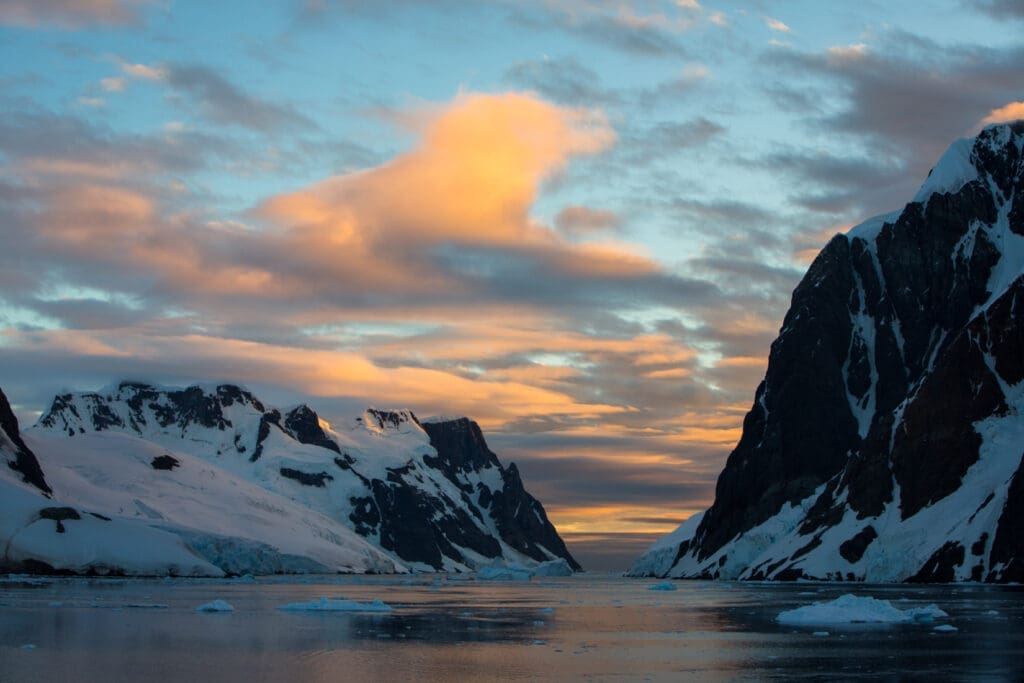
We hope you found our Antarctica Cruise Guide to be informative and helpful.
Happy Adventuring!
Cheers,
Jeff
Jeff Bonaldi
Founder & CEO
The Explorer’s Passage
About Jeff Bonaldi
Jeff Bonaldi is the Founder and CEO of The Explorer’s Passage, a premier adventure travel company. His mission is to provide travelers with the opportunity to transform their lives and the planet through the power of adventure.
Learn more about Jeff’s story and his company HERE.
Share this amazing location!



